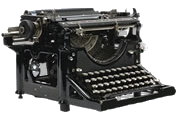Social Issues in Movies
(Stage Magazine, 1938)
Aren’t you tired of Hollywood’s socio-political rantings?
•Nuclear power…………….They’re against it (The China Syndrome).
•Antisemitism……………….They’re against it (Gentleman’s Agreement).
•Alcoholism………………….They’re against it (Lost Weekend).
•Racial segregation………..They’re against it, but in 1915 they were for it (Birth of a Nation).
One glance at this 1939 article and you’ll be able to blame it all on the poet Archibald McLeish (1892 – 1982) who clearly advocated for political posturing in American movies.
No doubt, McLeish must have been very happy when Warner Brothers released Confessions of a Nazi Spy in April of 1939; it was the first Hollywood film to take a swipe at the Nazi war machine.
